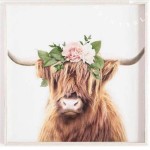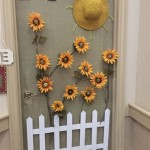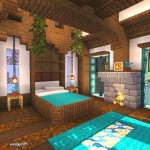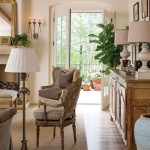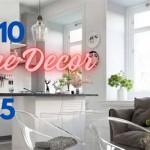Types of Interior Home Decor Styles in 2024
The world of interior design is constantly evolving, reflecting changing tastes and trends. As we enter 2024, several distinct styles are shaping the way homes are decorated. Understanding these styles can help homeowners create spaces that are both stylish and functional, reflecting their individual personalities and needs.
1. Minimalism: Clean Lines and Functionality
Minimalism continues to hold its place as a popular choice for those seeking a clutter-free and serene living environment. Key characteristics of this style include:
- Simplicity: Minimalist interiors prioritize clean lines, geometric shapes, and a limited color palette. They often feature a neutral backdrop with pops of color strategically placed through furniture or art.
- Functionality: Every piece of furniture and decor serves a purpose. Excess clutter is avoided, and storage solutions are carefully integrated to maintain a sense of order.
- Natural Materials: Minimalist decor often incorporates natural materials like wood, stone, and linen, adding warmth and texture to the space.
- Sophisticated Lighting: Lighting plays a crucial role in creating the desired ambiance. Minimalist interiors typically feature well-defined lighting schemes, with a focus on natural light and strategic use of pendant lights or recessed lighting.
Minimalism is a timeless style that can work well in any room of the house, from bedrooms and living rooms to kitchens and bathrooms. It's a great option for those who value simplicity, practicality, and a sense of calm.
2. Scandinavian Style: Light, Bright, and Welcoming
Scandinavian design, known for its light, airy, and welcoming aesthetic, continues to be a popular choice for homeowners seeking a sense of warmth and comfort. Here are some key elements of Scandinavian style:
- Light Color Palette: Scandinavian interiors often feature a light and bright color palette, with white, gray, and beige dominating. These colors create a feeling of spaciousness and allow natural light to flow freely.
- Natural Materials: Scandinavian design embraces natural materials like wood, wool, and leather. These materials add warmth and texture, creating a cozy and inviting atmosphere.
- Simple Furniture: Furniture in Scandinavian interiors is typically simple and functional, with clean lines and minimal ornamentation. It often features light wood and a focus on comfort.
- Geometric Patterns: Geometric patterns, such as stripes and chevrons, are often incorporated into textiles and accessories, adding visual interest without overwhelming the space.
- Cozy Elements: Scandinavian design balances minimalism with warmth and comfort. This is achieved through the use of soft textiles, plush rugs, and comfortable seating arrangements.
Scandinavian style is adaptable to a variety of spaces, from modern apartments to traditional homes. Its focus on light and warmth makes it an excellent choice for creating a sense of peace and tranquility.
3. Bohemian Chic: Eclectic and Expressive
Bohemian style is all about embracing individuality and expressing your unique personality through decor. This style is known for its eclectic mix of patterns, textures, and colors. Here are some key characteristics of Bohemian chic:
- Mix and Match: Bohemian interiors are characterized by a willingness to mix and match patterns, colors, and styles. This can involve incorporating vintage finds, ethnic textiles, and globally-inspired elements.
- Vibrant Colors: Bohemian design often features a vibrant color palette, embracing bold hues, rich jewel tones, and earthy shades.
- Layer Textures: Bohemian interiors are all about creating depth and interest through the layering of textures. This can involve combining woven rugs, plush throws, and patterned cushions.
- Natural Materials: Bohemian style embraces natural materials like wood, leather, and woven textiles. These materials add warmth and create a sense of connection to nature.
- Global Inspiration: Bohemian design often incorporates elements from different cultures, including Moroccan lanterns, Indian tapestries, and tribal art. These pieces add a sense of travel and adventure to the space.
Bohemian style is a great choice for those who love color, pattern, and expressing their individuality through their surroundings. It's a style that can be adapted to any room, from bedrooms and living rooms to dining areas and home offices.
4. Mid-Century Modern: Timeless Elegance
Mid-century modern remains a popular choice for those who appreciate clean lines, simple forms, and an emphasis on function. Here are some key elements of this style:
- Organic Shapes: Mid-century modern design often incorporates organic shapes, such as curved lines and rounded corners, adding a touch of softness to the space.
- Geometric Patterns: Geometric patterns, like chevrons, stripes, and polka dots, are often incorporated into textiles and accessories, adding visual interest and a touch of retro flair.
- Warm Color Palette: Mid-century modern interiors typically feature a warm color palette, with earthy browns, greens, yellows, and oranges being popular choices.
- Natural Materials: Mid-century modern design emphasizes natural materials like wood, leather, and wool. These materials add warmth and texture, creating a sense of timeless elegance.
- Iconic Furniture: Mid-century modern is known for its iconic furniture pieces, such as Eames chairs, Saarinen tables, and Noguchi lamps. These pieces are timeless and often feature sleek, minimalist designs.
Mid-century modern design works well in a variety of spaces, from living rooms and dining rooms to bedrooms and home offices. Its combination of clean lines, organic shapes, and iconic furniture creates a timeless and sophisticated aesthetic.
5. Industrial Chic: Raw and Edgy
Industrial chic is a style that embraces raw materials, exposed elements, and a sense of urban cool. It draws inspiration from industrial spaces, factories, and warehouses. Here are some key characteristics of industrial chic:
- Exposed Brick and Concrete: Industrial chic interiors often feature exposed brick walls, concrete floors, and industrial-style ceilings, creating a raw and edgy aesthetic.
- Metal Accents: Metal accents, such as steel beams, pipes, and light fixtures, are common elements in industrial chic design. These elements add a touch of industrial grit and sophistication.
- Dark Color Palette: Industrial chic interiors typically feature a dark color palette, with grays, blacks, and browns being popular choices. These colors create a sense of depth and sophistication.
- Vintage Industrial Furniture: Industrial chic often incorporates vintage industrial furniture, such as metal stools, workbenches, and old factory carts. These pieces add character and a sense of history to the space.
- Industrial Lighting: Industrial lighting fixtures, such as pendant lights, track lighting, and exposed bulbs, are common elements in industrial chic interiors. These fixtures add a touch of industrial cool and provide functional illumination.
Industrial chic is a dynamic and versatile style that can be adapted to a range of spaces, from lofts and apartments to homes with open floor plans. It's a great choice for those who appreciate a raw and edgy aesthetic and want to incorporate a sense of urban cool into their home decor.

Living Room Trends 2025 What S New In Home Comfort And Style Decorilla Interior Design

Living Room Trends 2025 What S New In Home Comfort And Style Decorilla Interior Design

Living Room Trends 2025 What S New In Home Comfort And Style Decorilla Interior Design

Living Room Trends 2025 What S New In Home Comfort And Style Decorilla Interior Design

Living Room Trends 2025 What S New In Home Comfort And Style Decorilla Interior Design

Living Room Trends 2025 What S New In Home Comfort And Style Decorilla Interior Design

Living Room Trends 2025 What S New In Home Comfort And Style Decorilla Interior Design

15 Best Modern Interior Design Ideas Of 2025 Decorilla
2025 Interior Design Styles 20 Must Have Looks For Your Home Orientbell Tiles

10 Home Design Trends That Will Be Big In 2025
